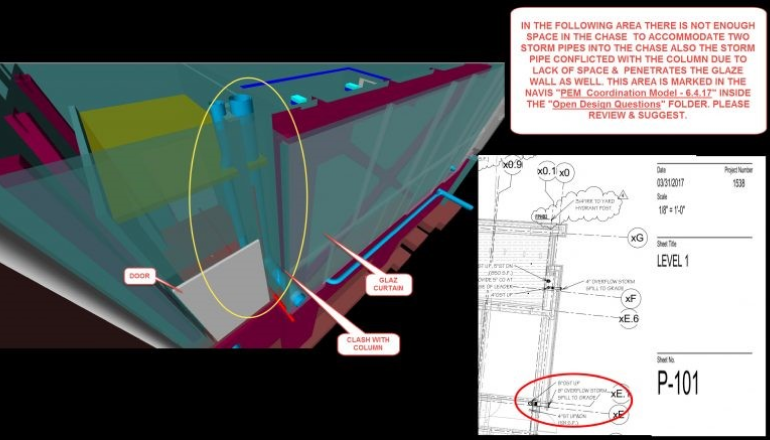SERVICES
3D CoordinationServices
3D coordination, within the context of construction and engineering, refers to the process of integrating and aligning three-dimensional models of various building systems and components to ensure they fit together properly and function as intended. This coordination is crucial in large and complex construction projects where multiple disciplines, such as architecture, structural engineering, mechanical, electrical, and plumbing (MEP) systems.
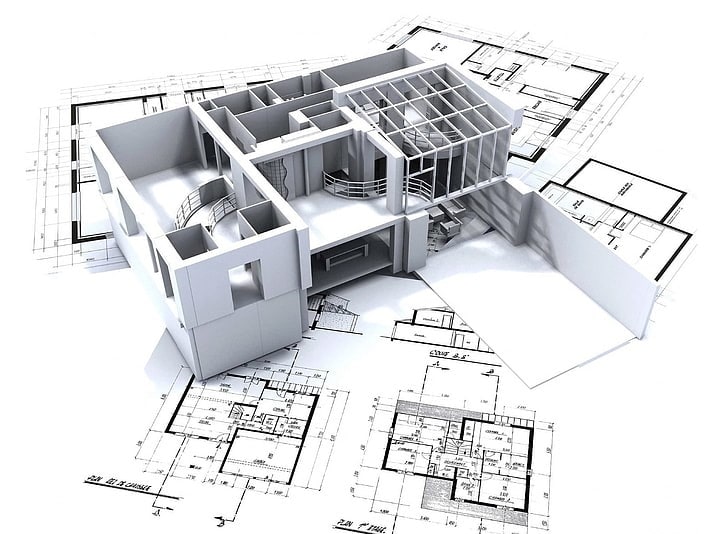
Clash Detection & Coordination:
Get seamless 3D coordination services in Florida for your construction projects: As a coordination consultant, the design inputs from various consultants are first coordinated through the BIM model by VDEC. Any design conflicts or inconsistencies in the inputs from two different stakeholders are raised before any issues are seen on site. Clash free construction drawing sets are then worked upon which lead to swift time bound execution.
Coordination and Clash Detection: The BIM model acts as an unparalleled tool for coordination and clash detection between components of different disciplines. VDEC has experience on clash detection at all LOD (Levels of development) on building as well as infrastructure projects.
Coordinated Model Generation: After clash reporting, resolutions are applied on to the model to generate a practically clash free model. Once the model is deemed clash free, the shop drawings and various information are extracted and the model is made available to different stakeholders for a better understanding of how execution is to be carried out.
A coordinated model incorporating Architectural, Structural and MEP disciplines is the output after adjustments to the clashes to ensure minimum constructability constraints during construction. This model can then be used for all the stakeholders to be on the same page as far as the progress of the construction and target realization is concerned. This coordinated model is free of any interdisciplinary clashes and thus facilitates in greater and more efficient communication of updated designs among all the parties involved.
For instance, we can tell you if the HVAC ducts will clash with the structural beam framing after doing a clash analysis of the models. This saves any costs that would have otherwise gone towards demolition of clashing components, additional procurement of redesigned components or regeneration of drawings.
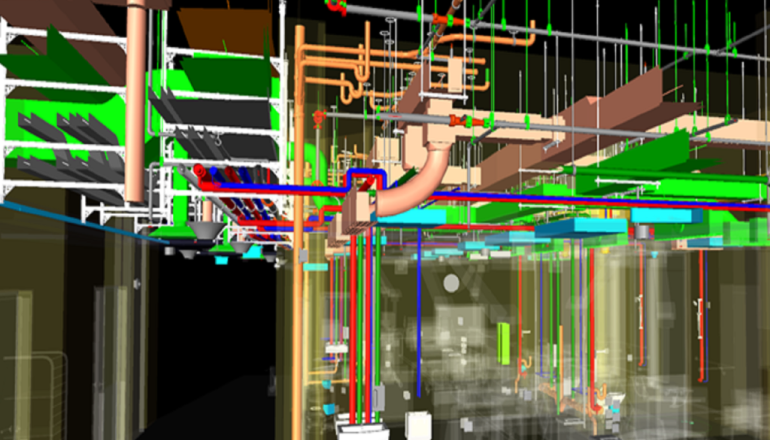
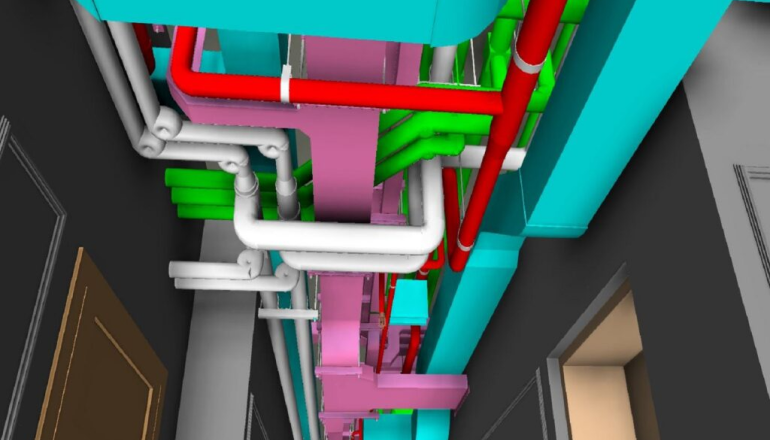
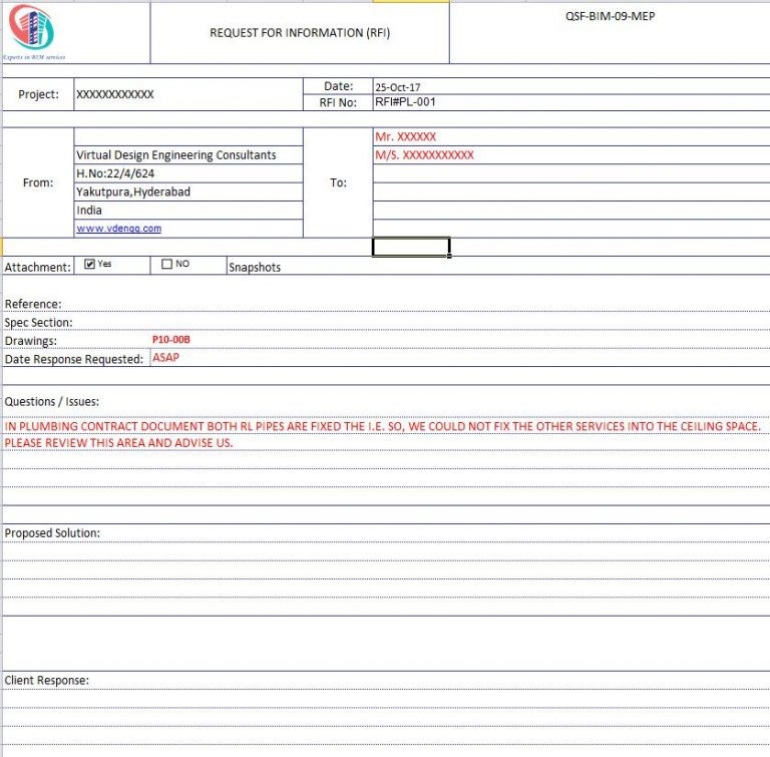
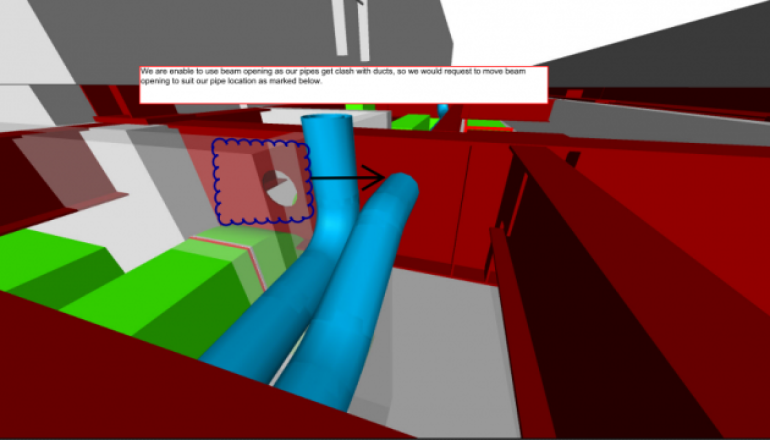
RFI:
Often in construction projects, a lack of understanding in design as well as a lack of close coordination between project teams causes inconsistencies. These are presented in the form of RFIs (Requests for information) which end up in costing the project stakeholders more time and money than the initial planned budgets.
By simulating building construction just as it would take place on the site, we would provide valuable insight into the constructability of your project. Our multi-disciplinary team raises red flags to all the relevant project partners well before time, allowing you to improve your performance and predictability of construction. The cloud based systems being used to manage RFIs ensures a clear flow of information and quick resolution of issues.
Coordinated Model Generation: After clash reporting, resolutions are applied on to the model to generate a practically clash free model. Once the model is deemed clash free, the shop drawings and various information are extracted and the model is made available to different stakeholders for a better understanding of how execution is to be carried out.
A coordinated model incorporating Architectural, Structural and MEP disciplines is the output after adjustments to the clashes to ensure minimum constructability constraints during construction. This model can then be used for all the stakeholders to be on the same page as far as the progress of the construction and target realization is concerned. This coordinated model is free of any interdisciplinary clashes and thus facilitates in greater and more efficient communication of updated designs among all the parties involved.
For instance, we can tell you if the HVAC ducts will clash with the structural beam framing after doing a clash analysis of the models. This saves any costs that would have otherwise gone towards demolition of clashing components, additional procurement of redesigned components or regeneration of drawings.
Design Conflict Resolution:
As a coordination consultant, the design inputs from various consultants are first coordinated through the BIM model by VDEC. Any design conflicts or inconsistencies in the inputs from two different stakeholders are raised before any issues are seen on site. Clash free construction drawing sets are then worked upon which lead to swift time bound execution.
Coordination and Clash Detection: The BIM model acts as an unparalleled tool for coordination and clash detection between components of different disciplines. VDEC has experience on clash detection at all LOD (Levels of development) on building as well as infrastructure projects.
Coordinated Model Generation: After clash reporting, resolutions are applied on to the model to generate a practically clash free model. Once the model is deemed clash free, the shop drawings and various information are extracted and the model is made available to different stakeholders for a better understanding of how execution is to be carried out.
A coordinated model incorporating Architectural, Structural and MEP disciplines is the output after adjustments to the clashes to ensure minimum constructability constraints during construction. This model can then be used for all the stakeholders to be on the same page as far as the progress of the construction and target realization is concerned. This coordinated model is free of any interdisciplinary clashes and thus facilitates in greater and more efficient communication of updated designs among all the parties involved.
For instance, we can tell you if the HVAC ducts will clash with the structural beam framing after doing a clash analysis of the models. This saves any costs that would have otherwise gone towards demolition of clashing components, additional procurement of redesigned components or regeneration of drawings.
